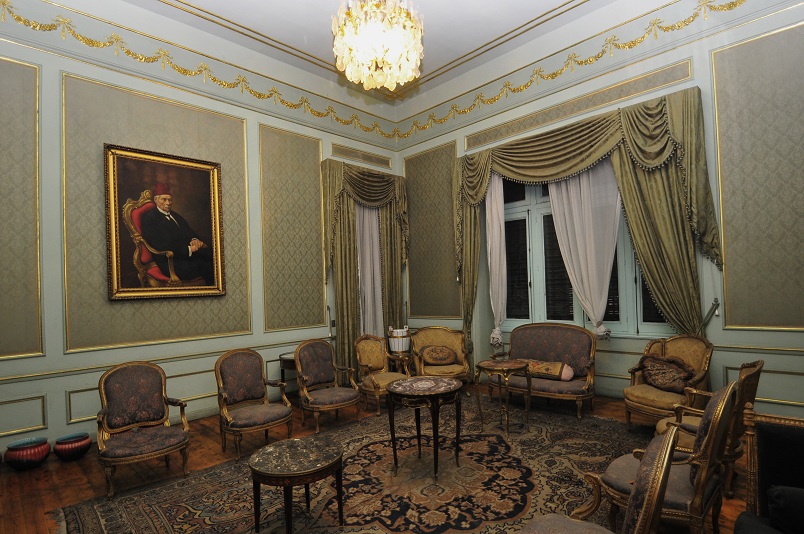
Hassan Ibrahim / DNE
When walking through the streets of Dokki or Giza, you might notice one or two statues of a distinguished elderly gentleman sitting down, wearing a full tuxedo complete with a bowtie. That man is Ahmed Shawky.
Ahmed Shawky
Shawky, nicknamed the “prince of poets” for his tremendous contribution to Arabic literature and specifically poetry, was born in 1868 and died in 1932. He lived through the British invasion of Egypt and witnessed the first part of what historians call “Egypt’s liberal experiment” that started in the 1920s.
Besides all the usual pharaonic and Islamic sites that Cairo offers, there are many gems of later ages that well warrant a visit. Shawqi’s Giza home, which was later turned into the Ahmed Shawky Museum, would be a good place to start.
Located on the Nile corniche in Giza, at the end of a small street named after Shawky, the museum can be reached through a short two minute walk from the main Giza street, Mourad Street (formerly Charles de Gaulle Street) where the Giza Zoo is located.
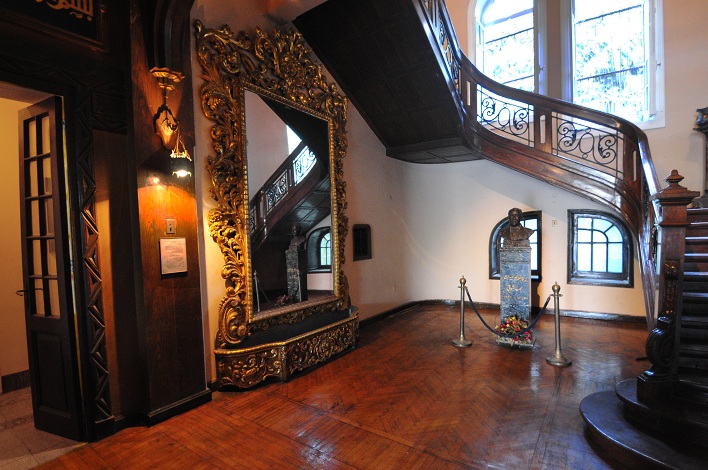
Hassan Ibrahim / DNE
Shawky initially lived in a house he named Karmet Ibn Hani (Ibn Hani’s Vineyard) after the poet Abu Nuwas in the Al-Matariyyah area near Khedive Abbas II’s palace at Saray El-Qobba. He was exiled during the first world war and when he returned he built the house that later became the museum in Giza, naming it Karmet Ibn Hani as well, after the first one.
The house overlooks the Nile and during Shawky’s life, one could also see the pyramids from the window, which is what drew him to that area. Tickets are EGP 1 for Egyptians, EGP 0.50 for students and EGP 3 for foreigners.
A visit to the museum consists of a tour of Shawky’s house. You get to see the poet’s bedroom, which is kept exactly the way it was when Shawky occupied it. Only the curtains have been replaced, but the new ones are in the same style of the old ones.
It is the same with most of the house, which has successfully been kept the way it was during Shawky’s time, with the exception of a few minor but necessary alterations.
It was in his bedroom where Shawky wrote most of his poetry, either sitting on his special Assiut chair or relaxing on his chaise longue, and it is also the room in which he died.
Shawky’s wife, Khadija Shahin, had her own bedroom. It is said he pitied her for having to stand his regular long-night sessions of writing poetry whenever inspiration hit. He had a separate bedroom built for her so she could enjoy a good night’s sleep.
Although he wrote most of his poetry in his bedroom, Shawky’s office is still one of the most interesting rooms in the house. It is where his ceremonial suit (a suit the elite of the time wore when they were in the presence of the king) is displayed, alongside a piece of the Kaaba’s cloth he received as a gift.
The corridors of the house have some impressive portraits and photographs. One in particular is definitive of Shawky’s life, as it shows him posing with the prominent musical composer Mohammed Abdel Wahab, whom Shawky took under his wing, and Egyptian leader and Prime Minister Saad Zaghloul, whom he deeply respected.
One of the most exciting things about the museum, however, are the dozens of original handwritten drafts of poetry displayed on the walls of most rooms and corridors, including some of his most famous masterpieces.
In addition to the picture the house paints of Shawky’s life, visiting the museum is also a great sociological experience. It gives the opportunity to take a proper look at how the nationalistic upper-class elite, who were heralded as Egypt’s salvation from British occupation at the time, lived.
Shawky’s house contained five different reception rooms for guests, including one for smokers and one for non-smokers, a haramlek which was a room strictly for women and the only room in the house decorated with Arab style furniture, as opposed to the rest of the house’s mostly French style, as well as rooms for his three children.
He also had a suite for Abdel Wahab, whom he decided to patronise, giving him the room, a salary, and introducing him to important people in music.
Shawky’s house is large and ostentatious; he was very much the master of his castle and took himself very seriously. The only telephone in the house, for example, was kept behind a small, metal-barred door for which he alone had the key, to prevent the women and children of the house from playing with it.
The basement has been turned into a hall for poetry recitals and cultural events by the state, and two events are held there every month.
Going to or from the museum, you will notice another quite famous statue, named Egypt’s Renaissance, standing opposite Cairo University Bridge in Giza. The statue was created by iconic Egyptian sculptor Mahmoud Mokhtar, who also has a museum dedicated to him.
Mahmoud Mokhtar
Mokhtar is labelled the father of Egyptian sculpture and despite his early death (he was born in 1891 and died in 1934), his impact on modern and contemporary Egyptian art is considered colossal.
The museum, located at the beginning of Tahrir Street, is less than a minute’s walk from the Cairo Opera House and the Opera metro station on the Zamalek side and also a minute’s walk from Dokki Square. Tickets are EGP 3 for Egyptians, EGP 1 for students and EGP 10 for foreigners. Fine Arts students enter free.
The museum was designed by prominent architect Ramses Wissa Wassef, and is home to eighty-five marble, stone, bronze, granite, basalt, and plaster works. It consists of just one floor and a basement, divided into several halls based on either theme or type of material.
The bronze section houses several of Mokhtar’s important works, such as a collection of eleven miniature statues representing all of Egypt’s provinces that existed in his lifetime. The miniatures were scheduled to be reproduced on a larger scale, with each statue being placed at the main square of the province it represented but Mokhtar’s premature death meant the project was never completed.
He was also interested in traditional Egyptian life and there are many statues and granite portraits representing peasants doing everyday activities like breaking bread or carrying food.
Mokhtar was particularly interested in sculpting famous figures from his time, and the figures hall in the museum houses statues and busts of prominent people like Adly Yakan Pasha, who served as prime minister three times, and before that as interior minister, foreign minister and speaker of the senate.
Other figures include another prime minister, Abdel-Khaleq Tharwat Pasha, formative photographer Mohamed Hassan, as well as the founder of the Faculty of Medicine Ali Ibrahim.
Mokhtar was a staunch nationalist and proponent of Egyptian independence, which he wasted no opportunity to display in his work. This is shown, for example, in the Khamaseen Hall of the museum, which is named after his famous Khamaseen statue depicting a woman walking against the khamaseen, a strong seasonal wind in Egypt, which is meant to symbolise Egypt’s struggle against British occupation.
His magnum opus, Egypt’s Renaissance, captures that feeling best. The statue, which was initially placed in Ramses Square before being moved to Giza, represents Egypt’s victory over occupation through the depiction of an Egyptian woman lifting her face veil while patting the Sphinx.
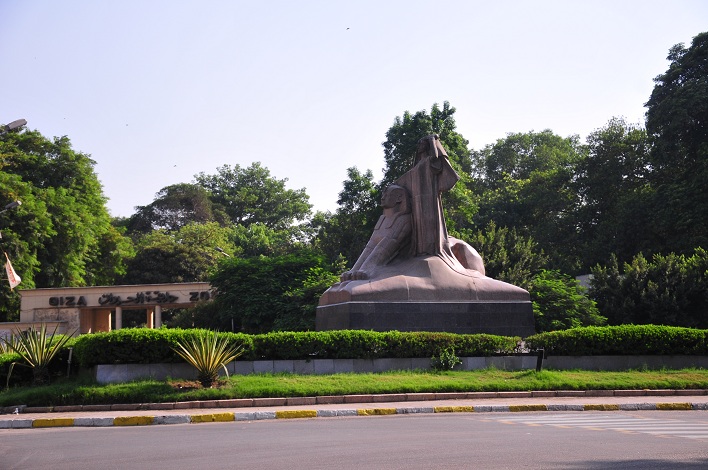
Hassan Ibrahim / DNE
Perhaps the most obvious way he shows his support for the anti-colonial movement however is his numerous depictions of nationalist leader Saad Zaghloul in several sculptures and granite portraits.
Mokhtar had met Zaghloul in Paris and upon his return to Egypt he joined Zaghloul’s Wafd Party and dedicated his art to the cause of anti-colonial nationalism.
It was Mokhtar who built the two giant statues of Zaghloul placed in Cairo and Alexandria, of which there are two miniatures displayed in the museum. He also depicted him in several other works such as the “Independence Project,” a granite portrait of Zaghloul being carried on the shoulders of the Egyptian people, and “Saad Zaghloul demands from the British minister,” another granite portrait, this time of Zaghloul negotiating Egyptian independence with a British official.
The basement floor of the museum includes a collection of newspaper clippings about Mokhtar’s achievements both in Egypt and abroad. His Egypt’s Renaissance won a gold medal at the official art exhibition of the Académie des Beaux-Arts in Paris, for example. The basement also includes a display of his tools and some of his certificates.
The photograph in Shawky’s museum, the numerous works of Mokhtar; all are demonstrations of how Saad Zaghloul, both as a person and a symbol, was important during that era.
Saad Zaghloul
Fortunately, Zaghloul’s house, which was called “Beit El Umma” (House of the Nation) because of the meetings between national leaders that regularly took place there, was preserved by his wife Safia and later turned into a museum as well.
After his death, a large mausoleum was built next to the house in a grand pharaonic style featuring obelisks and ancient Egyptian statues. His remains were laid to rest there.
Both the house and the mausoleum are located in the Mounira district in downtown Cairo. The easiest way to get there is via metro. The Saad Zaghloul station is right where the house and mausoleum are. Tickets to the house are EGP 3 for Egyptians and EGP 10 for tourists. Tickets to the mausoleum are EGP 2 for Egyptians and EGP 4 for tourists.
Zaghloul was born in 1859 and studied in Al-Azhar University. He was politically active as a young man in the 1880s and was briefly arrested. Upon his release he practiced law, which allowed him to enter the Egyptian political scene.
He married Safia, the daughter of Mustafa Pasha Fahmi, the prime minister at the time, and in 1901 the couple decided to move to the house that later became Beit El Umma. This house later became the revolution’s headquarters in 1919, following Zaghloul’s exile to Malta.
He had led a group of nationalists that called themselves the “Wafd” (delegation) to represent Egypt at the Paris Peace Conference where he argued for Egyptian independence, which was refused. The British demanded Zaghloul cease his political activity and exiled him upon his refusal, a decision that led to a massive popular uprising.
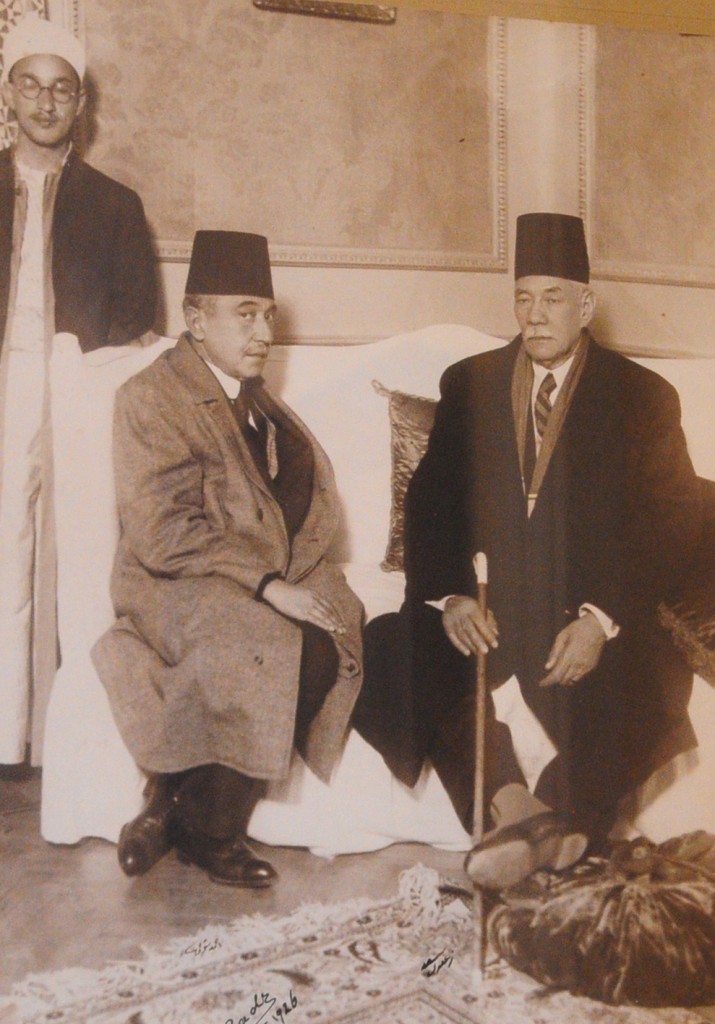
Hassan Ibrahim / DNE
The British eventually capitulated and Egypt was granted official independence on 28 February 1922, and in 1923 a democratic constitution describing a constitutional monarchy with a parliamentary system of governance was ratified.
Zaghloul returned from exile and led the nationalists under the Wafd Party to a landslide victory in the January 1924 parliamentary elections, subsequently becoming Egypt’s first post-independence and democratically elected prime minister.
His tenure did not last long as he was forced to resign in November of the same year following the assassination of Sir Lee Stack, the Sirdar of Egypt and Governor General of Sudan. He returned to politics in 1926 as the Speaker of National Assembly, parliament’s lower house, and died in 1927.
Upon his death the government embarked on a large-scale project to build him a mausoleum, which was completed in 1936, when his remains were transferred there. A pharaonic style was chosen for the mausoleum as to not alienate his non-Muslim devotees and emphasise that he was a leader to all Egyptians.
The mausoleum is mainly granite, with pharaonic columns and huge lotus pillars. From the outside it looks like an Egyptian temple and on the inside resembles the burial chambers of ancient Egyptian pharaohs.
After your visit to the mausoleum, walk for a few steps and you will find yourself on the front lawn of one of Egypt’s most important modern historical sites. Congratulations, you are at the House of the Nation.
Beit El Umma was built in the European style favoured by the political elite of the time. It was the headquarters of a revolution and its garden is overlooked by a balcony that saw the Pasha deliver many an inspiring speech to the masses.
The entrance hall is home to a bust of Zaghloul, many velvet lined chairs, a staircase and an elevator that Safia Zaghloul had installed later in the Pasha’s life.
The study, home to a library and his desk, has been left the way it was during his lifetime. It is located at the end of the hallway and the desk chair has its back to the window with a large mirror in front of the desk so Zaghloul could see what was going on behind his back, in case he was attacked. He had, in fact, survived an assassination attempt in Alexandria in 1924. The study is also where he kept his ceremonial suits.
At the end of the hallway lies the dining room, decorated in a traditional yet elegant manner. Zaghloul naturally sat at the head of the table and Safia would not allow anyone to take his place there following his death.
Climbing the staircase you are greeted by two stuffed parrots in cages. These parrots had been taught to greet Zaghloul, one in Arabic which repeated the popular chants of the day like “long live Saad,” and the other in French. He used to feed them daily and was deeply attached to them. They refused to eat following his death and shortly after died themselves, which is when Safia ordered them stuffed.
The second floor is home to the couple’s bedroom, rather simple for the standards of the day, including two large four poster beds connected to each other, a chaise longue and a large wardrobe but not much more.
Other rooms in the house are the bathrooms, a room where Safia received her guests and a meeting room where Saad gathered with the Wafd. The centre piece of this room is a small couch on which only he would sit, surrounded by velvet lined chairs for party members to sit. The room contains one of the many portraits and photographs of the Pasha, however only this one is in colour.
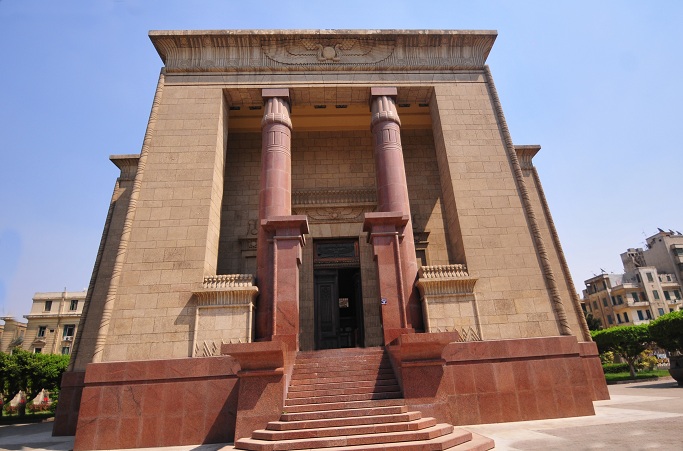
Hassan Ibrahim / DNE
Following his death, the cabinet declared the house as belonging to the entire nation but allowed Safia to live there for the rest of her life. Beit El Umma is as an important part of Egypt’s history as the great pyramid, for it has played a formidable part in its independence and the establishment of the modern Egyptian state.
For those who visit Egypt on a quest to learn more about this land and its people, you will do well to go to these sights as they tell the story of a time where Egypt was experiencing a large artistic and cultural renaissance and political upheaval, much like now. The democracy then was by no means perfect, but it was arguably headed there.
As for local tourists, it is imperative that you visit these sights, alongside others not mentioned in this piece, for there is a famous mantra about the failure to know one’s history. “He who knows only his own generation remains always a child,” Roman scholar Cicero once said.







